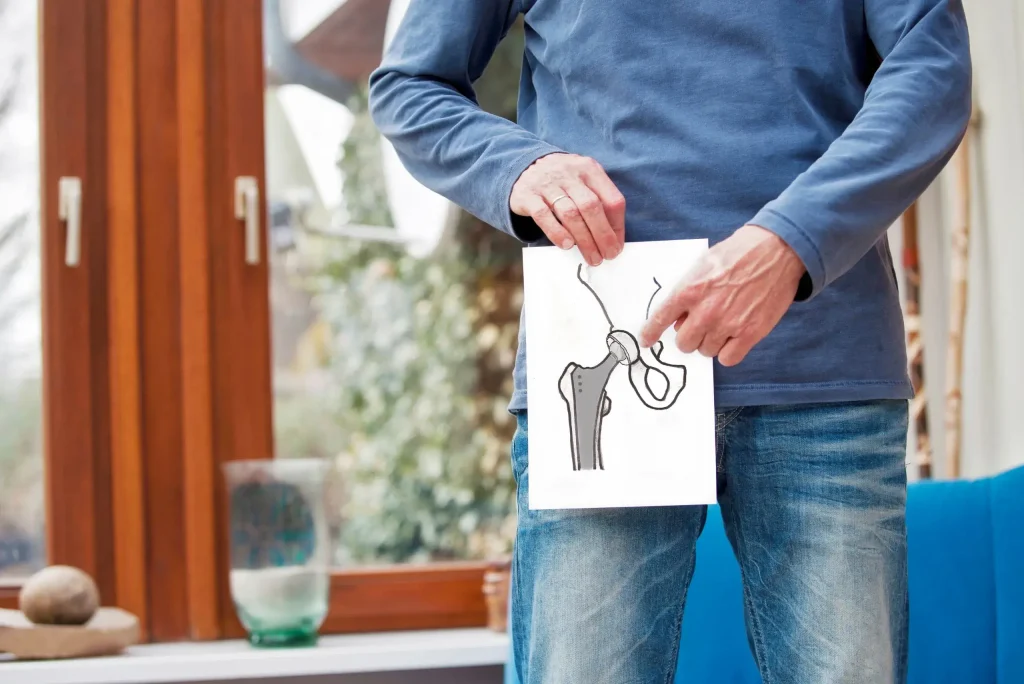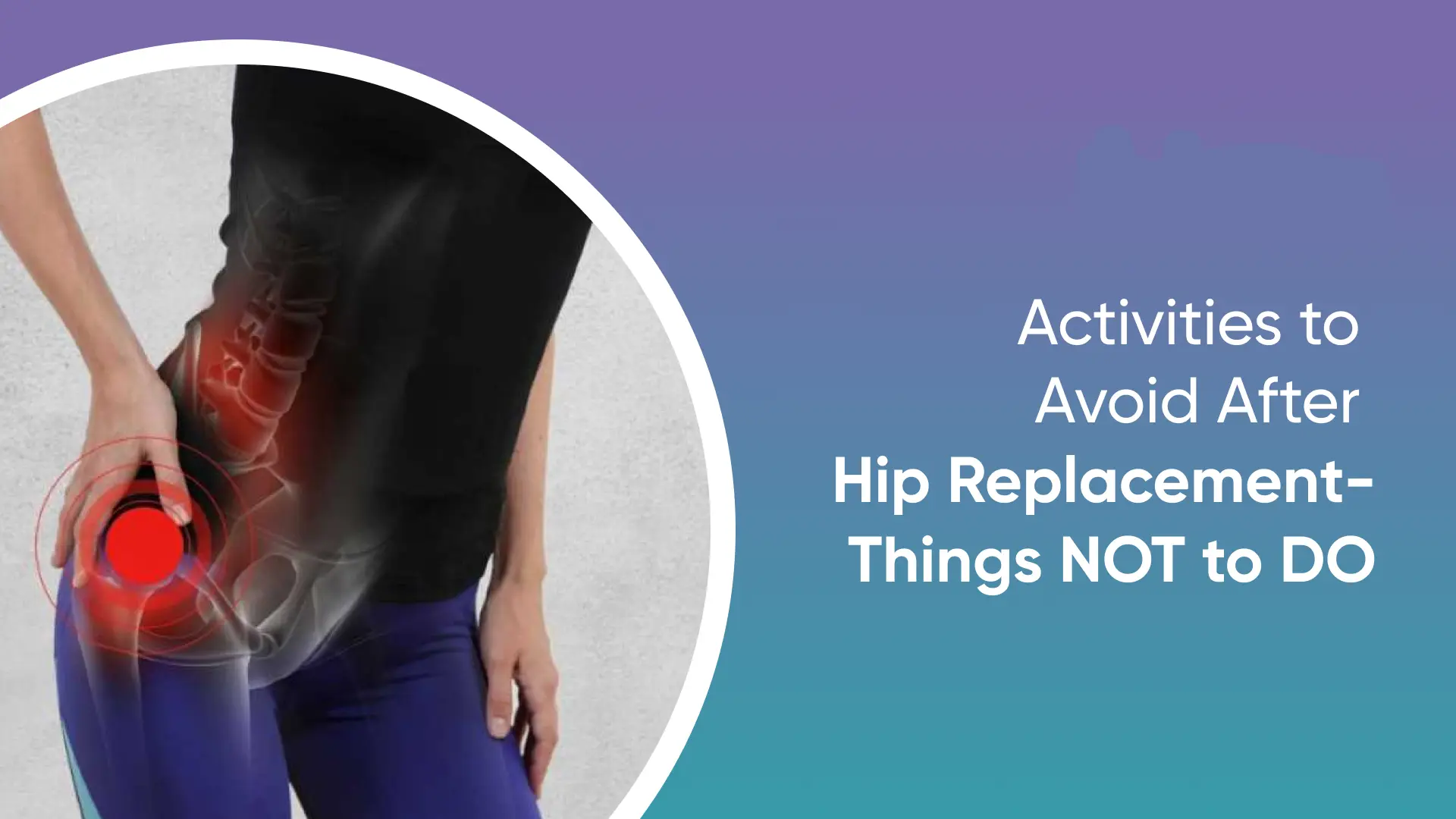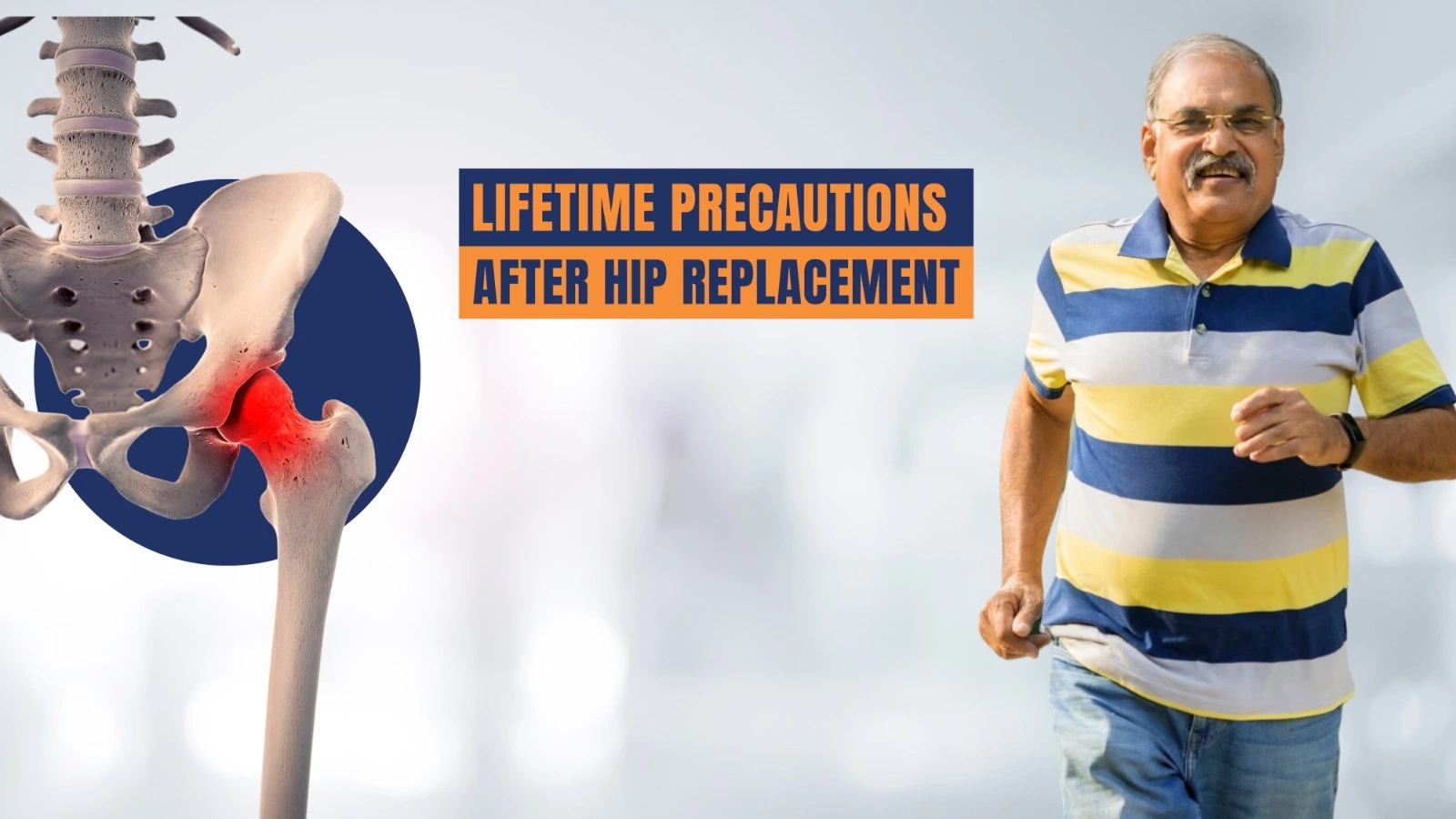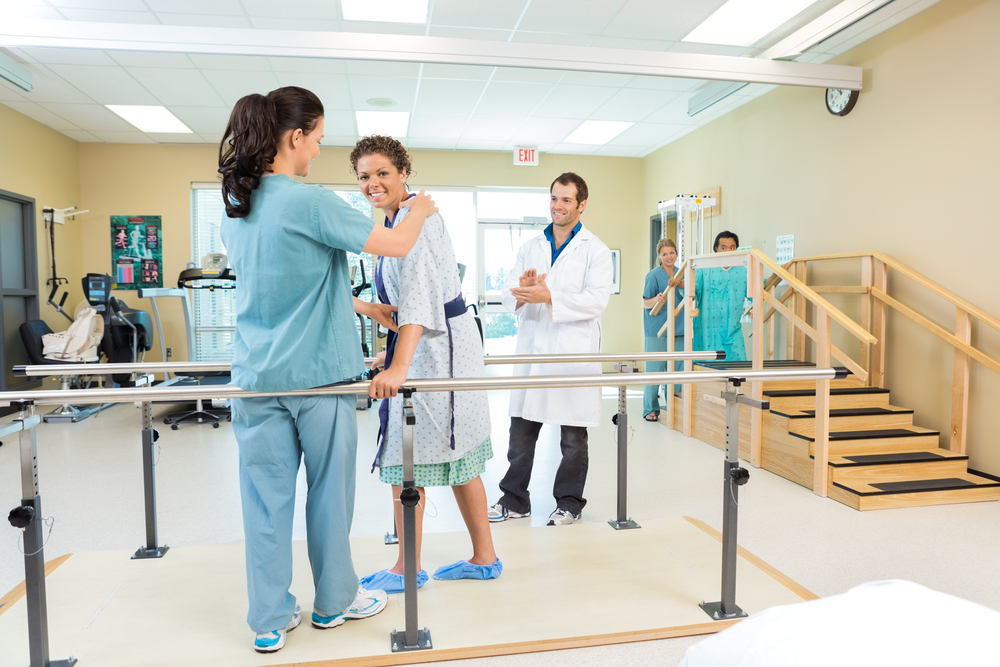
When Can I Wear Jeans After Hip Replacement? + Precautions
Have you also replaced your hip joint and you have this question: when can i wear jeans after hip replacement? Perhaps most people’s idea of hip joint replacement surgery is that they will not be able to continue their normal life actively after the surgery and will have limitations. But they should know that this is a wrong belief and most people can easily continue their sports activities and other daily activities after hip replacement surgery without any problems.
Even women can have a natural birth with a doctor’s diagnosis. In general, patients’ routines return to their normal state after hip replacement surgery. Because they feel less pain after surgery. Care after hip joint replacement is very important. These cares usually include diet, medications, exercise program, physical activity level, medical examinations and recognition of signs and symptoms of infection.
In this article from the humanhealthmag, we will answer the question that when can I wear jeans after hip replacement? We are also going to introduce you to some care points after hip and thigh surgery, so stay with us until the end.
Precautions After Hip Replacement Surgery
Before answering the question that when can i wear jeans after hip replacement? We must note that the prosthesis placed in the hip or artificial joint has a mechanical system and any system under pressure will eventually wear out. For this reason, recommendations are given to patients to make this joint more durable, and if they are followed, the life of the artificial joint will increase. Some patients consider these precautions as post-operative restrictions.
The length of treatment and the recovery process of patients and the restrictions created for them depend on the surgical method and the age of the patient and other factors. Orthopedic doctors and surgeons usually prohibit their patients for 6 weeks from being in situations that cause dislocation of the artificial joint.
After this period, the soft tissues around the joint are restored to some extent and the patient can be more mobile. As mentioned, the condition of each patient is different from another patient and it is not possible to provide a general instruction for them. However, there is a risk of joint dislocation in all patients. Therefore, it is necessary for the patient to fully follow all the doctor’s instructions for post-operative care.

When Can I Wear Jeans After Hip Replacement?
In answer to this question, we must say that the exact time to wear jeans after hip joint replacement depends on various factors, including the type of surgery, the degree of recovery of the person, and the doctor’s recommendations. Usually, in the first weeks after the operation, it is recommended to wear loose and comfortable clothes such as shorts or tights. As healing progresses, you can consider wearing tighter pants, such as jeans. However, it is best to consult your doctor before making any changes in clothing. He/She can advise you on the right time to wear jeans and how to wear them based on your condition.
Always put your comfort first. Even after full recovery, if wearing jeans causes discomfort or pain, stop wearing them. Remember that you may need help putting on and taking off your jeans at first. We recommend starting with slightly looser jeans and gradually working your way up to tighter styles.
When Can I Wear Jeans After Hip Replacement? Factors Affecting the Time of Wearing Jeans
- The type of surgery and repair method that the doctor has chosen for you affects the recovery time and movement limitations.
- Each person recovers at a different speed. Some people recover more quickly and others more slowly.
- The most important factor in determining when to wear jeans is your doctor’s orders. According to your condition, the doctor will tell you the best time to wear jeans.
- Jeans with a drawstring or waistband may be worn earlier than regular jeans.
- It may take several weeks or even months to fully heal and wear jeans normally.
- Talk to your doctor: Talk to your doctor about any questions you have about what to wear after surgery.
- Until your doctor gives you permission to wear jeans, wear comfortable, loose-fitting clothes.
- after the permission of the doctor, first wear jeans for a short time and if there is no problem, gradually increase the time of wearing them.
Important Points About Increasing the Lifespan of a Replaced Hip Joint
Now that we understand, when can i wear jeans after hip replacement? To ensure a complete recovery and prevent complications, it is better to get familiar with some restrictions when sitting, walking and sleeping, as well as the most important principles of care after hip replacement.

- The first point regarding increasing the lifespan of an artificial joint is choosing an urban lifestyle. This means that the patient should use the table and chair for eating and praying. Also, use a bed when sleeping and avoid sitting on the floor
- The second restriction after hip joint replacement is using the toilet, which patients must follow until the end of their lives.
- The next thing is to prevent obesity and weight gain, which causes extra pressure on the artificial joint and reduces its life.
- Avoiding heavy sports such as football and volleyball on a daily basis. Activities such as walking, swimming and cycling are recommended for this group of patients. Also, the recovery period of patients who exercise regularly is less than other people.
- Carrying out intense repetitive activities increases the wear and tear process of the artificial joint. For this reason, most doctors ask their patients to avoid sports such as basketball, skiing, and long runs.
- Carrying out intense repetitive activities increases the wear and tear process of the artificial joint. For this reason, most doctors ask their patients to avoid sports such as basketball, skiing, and long runs.
- Avoid lifting heavy objects, because the prosthesis may be damaged due to excessive flexibility of the hip joint, and the risk of dislocation of the joint is high in this case.
- According to the doctor’s order, the patient should avoid air travel for a while, because the way of sitting in the plane leads to pain in the patient, and the changes caused by the air pressure may cause swelling of the artificial joint.
- For some time after the surgery, the patient needs the help of others and the use of assistive devices to move.
- Try to always keep your knees apart.
Restrictions When Sitting After Hip Replacement
- When sitting in a chair, the patient should be careful not to put the operated leg over the other leg.
- Avoid turning the operated leg inwards
- Avoid leaning forward while sitting on the chair
- Do not bend forward to pick up objects from the floor
- In order to sit on a chair, try to use long and stiff chairs, and comfortable sofas are not suitable for such people
- Ask other people for help to put on pants and socks
- Avoid sitting on all fours
- Avoid going on long trips
- Avoid sitting on chairs with short legs

Restrictions When Walking and Sleeping After Hip Replacement
- If possible, the patient should not go up and down the stairs, and if necessary, the height of the stairs should be low to prevent excessive bending of the hip joint.
- Avoid being in a position where you might fall.
- Use hard mattresses when sleeping.
- When sleeping after hip joint replacement surgery, use a pillow between the knees. This is to prevent the leg from turning inward. Make sure that the pillows are not placed under the knee.
- Avoid turning the big toe inward, because this action is associated with the rotation of the hip joint and leads to its dislocation.
- Walking after hip joint replacement must be done with a walker. In such a way that the patient places the legs of the walker on the upper step and in a fixed place and raises the operated leg and by pressing the walker and applying his weight on the hands, he raises the healthy leg.
- To go down the stairs, the same procedure should be followed, first the walker is placed on the fixed lower step, and then the operated leg is moved on the lower step and by applying weight on the walker, the healthy leg is moved.
- When sleeping on the bed, the patient should lie on his back and place his legs slightly apart. A pillow can also be used between the patient’s legs. Also, the patient can slightly bend his knee in this position, but avoid placing the legs on each other.
- After the surgery, the person must have enough mobility and lack of mobility causes the formation of blood clots, which is one of the side effects of the surgery. For example, the patient can move his ankle while resting, which leads to better blood supply to the joint and faster recovery. He should also try to walk at regular intervals at home and leave the house if allowed by the doctor.
- Do physical therapy exercises to strengthen thigh muscles. These exercises will be taught by a physiotherapist. In addition to strengthening the thigh muscles, the purpose of performing these exercises is to increase the patient’s range of motion, which also causes the patient to recover faster.
When Can I Wear Jeans After Hip Replacement? Symptoms Indicating Infection
- Persistent fever (above 100 degrees)
- Strong tremors
- Increased redness, tenderness, or swelling of the wound
- Water and blood coming out of the wound
- Pain increases with both activity and rest

When Can I Wear Jeans After Hip Replacement? Warning Symptoms of Blood Clots
- Pain in the leg or leg that is not related to the incision site
- Tenderness or redness above or below the knee
- Severe swelling of the thigh, leg, ankle, or foot that does not go away with leg elevation
- In very rare cases, the blood clot can travel to the lungs and become life-threatening
Symptoms that indicate a blood clot has gone to the lungs include:
- shortness of breath
- Sudden onset of chest pain
- Localized chest pain with coughing
- If you experience any of the above symptoms, you should inform your doctor immediately
Concluding Remarks About When Can I Wear Jeans After Hip Replacement?
In this article, we answered the question that when can i wear jeans after hip replacement? Just like surgery for incontinence in the elderly male, the most important principles of care after hip joint replacement are wound care. In general, to protect the new joint and also speed up the healing process, it is recommended to take post-operative care seriously.
Try to avoid infection. Infection can enter the body through a wound or visit to the dentist, and reaching the artificial joint may lead to re-surgery of the joint. Visit your doctor at regular intervals so that the function of the artificial joint can be checked by the surgeon and if there is a problem, it can be fixed. The doctor uses radiology images to observe the changes of the replacement prosthesis.

FAQs
How Soon Can I Drive After Hip Replacement Surgery?
In most cases, you can resume driving when you are off pain medication, and when your strength and flexibility have returned to normal. Your doctor will tell you when you can drive again.
How Long After Hip Joint Surgery Can You Have Sex?
Please check with your doctor about how long you can safely resume sexual activity. Depending on your condition, you may be able to resume sexual activity within a few weeks after surgery.
How Long After Hip Replacement Surgery Can You Walk Up Stairs?
To climb the stairs, you need the help of railings and crutches. It should be noted that climbing the stairs should be done slowly and with appropriate shoes so that problems such as falling down do not arise for the patient. When climbing, first place your healthy leg on the stairs and with the help of handrails or crutches (move most of your weight towards the handrail and your healthy leg) raise your operated leg.
How to Go Down Stairs After Hip Surgery?
To go down the stairs, make sure that the stairs are not wet. As mentioned above, wearing the right shoes can reduce the risk of slipping and falling. When going down the stairs, first place the cane on the bottom step and shift your weight towards the railing or the cane. Then put your operated leg on the bottom step and slowly lower your healthy leg.
